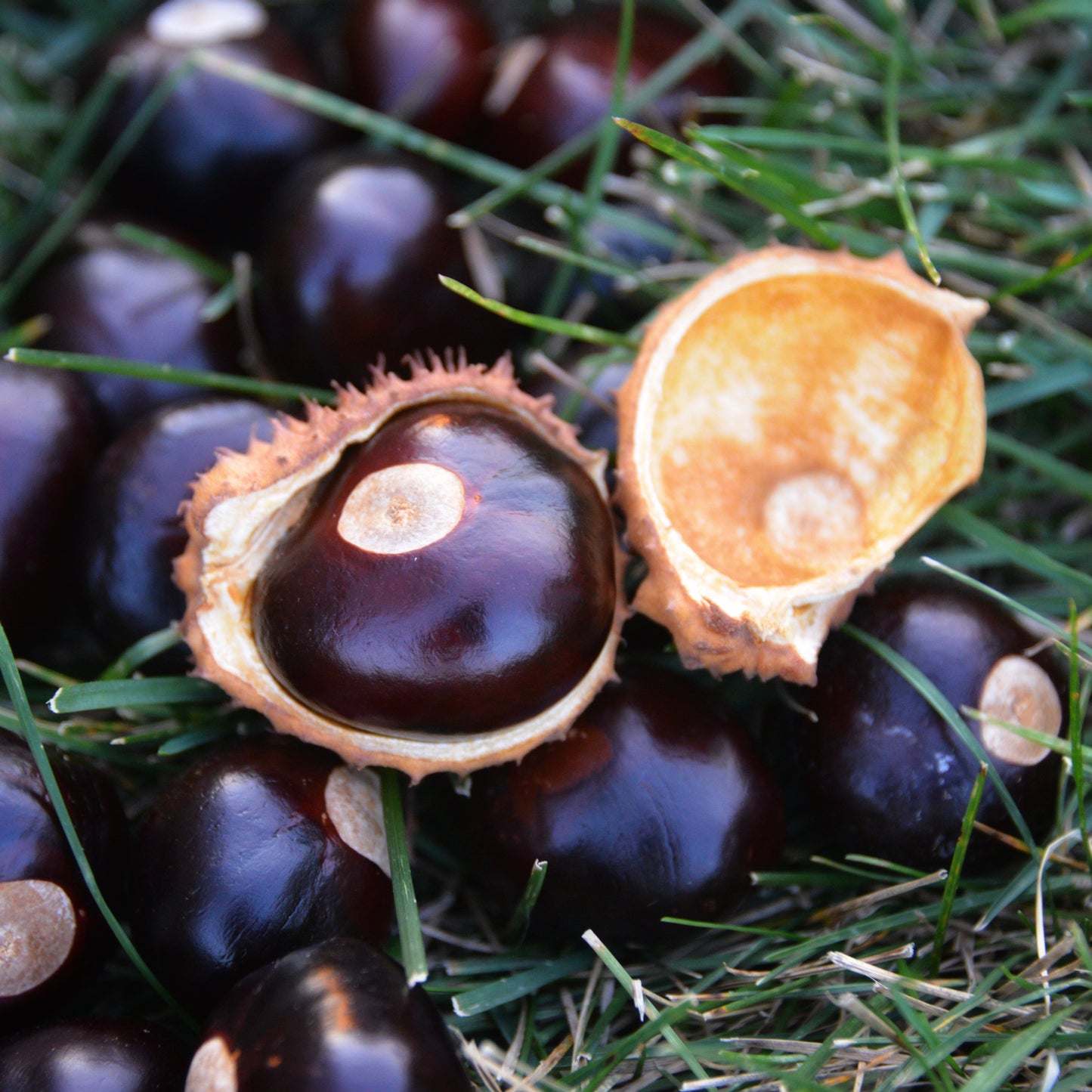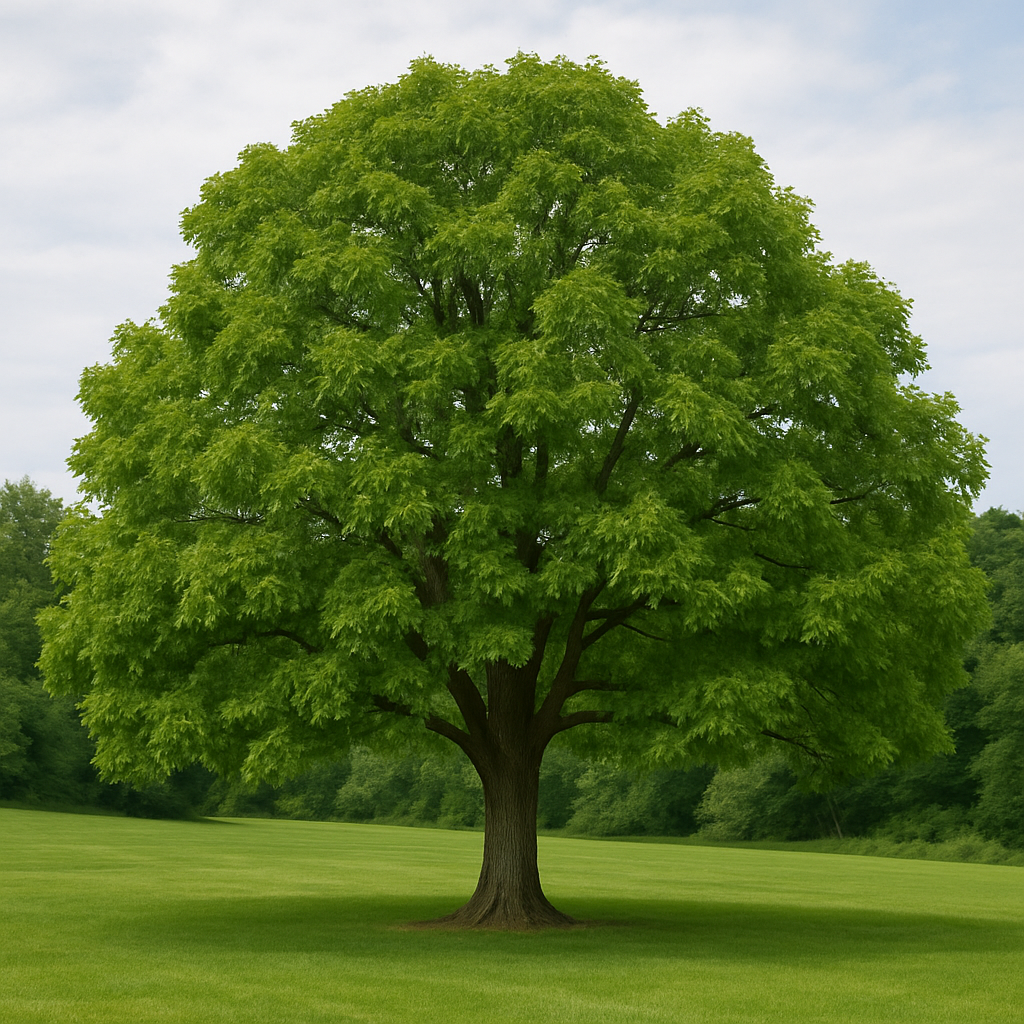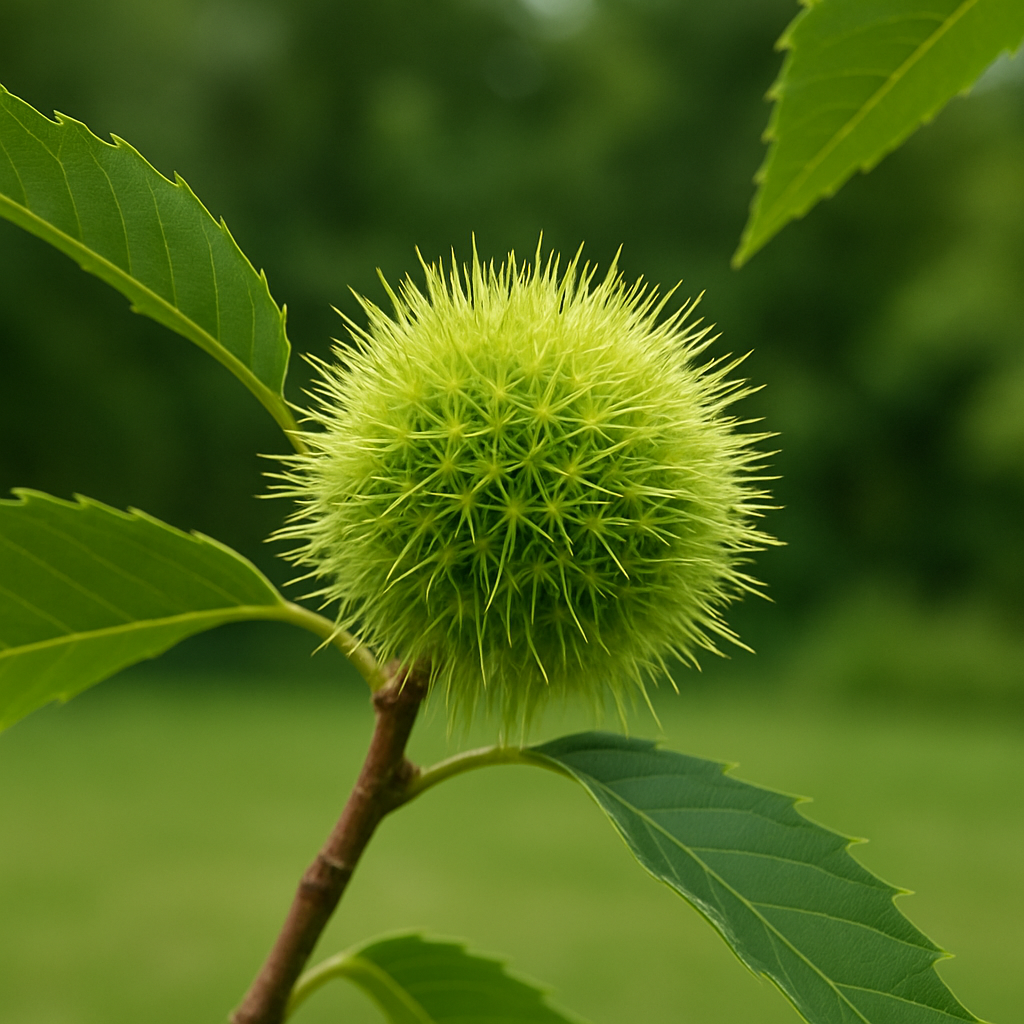Limited Quantities - Reserve Now For Fall
Hybrid Chestnut Tree
Hybrid Chestnut Tree
Couldn't load pickup availability
Castanea dentata × Castanea mollissima
Hybrid American Chestnut Tree
The Hybrid American Chestnut Tree is a blight-tolerant restoration variety developed to bring back the majesty of the once-dominant American chestnut. By crossing the native Castanea dentata with the disease-resistant Chinese chestnut (Castanea mollissima), this tree combines towering height, native adaptability, and improved resilience.
Ideal for reforestation, large landscapes, food forests, and wildlife plots, the hybrid American chestnut is a fast-growing, nut-producing hardwood that supports both ecosystem recovery and landowner productivity.
Hybrid American Chestnut Tree Overview
| Attribute | Details |
|---|---|
| 🌿 Botanical Name | Castanea dentata × Castanea mollissima |
| 🏷️ Common Names | Hybrid American Chestnut, Restoration Chestnut |
| 🌳 Mature Height | 40–80 feet |
| 🌐 Mature Width | 30–40 feet |
| 📈 Growth Rate | Fast (2–4 feet per year) |
| ⏳ Lifespan | 50–100+ years |
| 🧊 USDA Zones | 4–8 |
| ☀️ Sun Preference | Full sun (required for nut production and healthy form) |
| 🧱 Soil Type | Well-drained loam, sandy, or slightly rocky soils |
| ⚖️ Soil pH | Slightly acidic to neutral (5.0–6.5) |
| 💧 Water Needs | Moderate; drought-tolerant once established |
| 🌰 Nut Type | Medium-sized sweet chestnuts; highly palatable |
| 🌸 Flower Color | Creamy yellow catkins; bloom in late spring |
| 🐝 Pollination | Requires another chestnut variety for cross-pollination |
| 🌿 Growth Habit | Upright, spreading canopy with strong central leader |
| ↔️ Spacing | 30–40 ft for nut production and canopy development |
| 🏡 Landscape Uses | Reforestation, wildlife plots, food forests, estate planting |
| 🧹 Maintenance Level | Low to moderate |
Environmental Benefits
🌰 Produces edible nuts for wildlife and humans
🐝 Supports pollinators and native insects with late-spring flowers
🌳 Contributes to restoring native forests and ecosystem health
🌿 Helps diversify woodlands, reduce erosion, and sequester carbon
Pros & Cons
| ✅ Pros | ⚠️ Cons |
|---|---|
| 🌱 Blight-tolerant hybrid revives a legendary native tree | 🌼 Requires cross-pollination with a second chestnut for nut production |
| 🌰 Produces sweet, edible chestnuts for food or wildlife | 📏 Large size may not be suitable for small urban yards |
| 🌿 Fast-growing and long-lived in suitable conditions | ❄️ Young trees may need protection in extreme winter climates |
| 🐦 High wildlife value for birds, deer, and small mammals | ✂️ Pruning needed to shape in early years for timber or orchard form |
| 🧬 Excellent for restoration, agroforestry, and legacy planting | 🌾 May need fencing in early years to prevent deer browse |
Planting & Care Guide
🛁 Water deeply after planting and during dry periods
🕳️ Dig a hole twice the width of the root mass; plant at soil level
🌾 Apply 3–4 inches of mulch around the base, avoiding the trunk
💦 Water weekly in the first two growing seasons for strong establishment
✂️ Prune lightly in winter to encourage a single central leader
🧪 Fertilize in spring with a low-nitrogen blend or organic compost
The Hybrid American Chestnut Tree brings together native legacy and modern resilience, offering a rare opportunity to grow a productive, fast-growing hardwood with deep ecological and cultural roots. Whether you're planting for timber, wildlife, or history, this tree offers strength, beauty, and a chance to be part of restoration success.
Share






